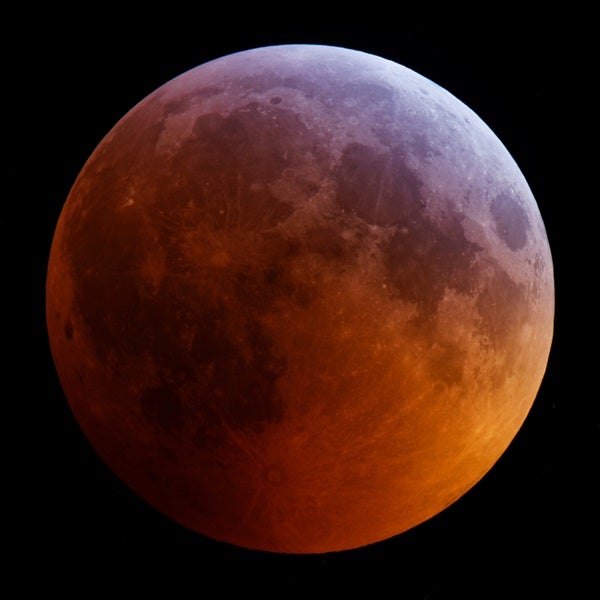The Moon can appear red during a total lunar eclipse. What does the eclipsed Moon look like after a recent eruption leaves a large amount of volcanic ash in the atmosphere?
During a total lunar eclipse, the Moon passes through Earth’s shadow, called the umbra. Our natural satellite isn’t completely dark during the event, however. Earth’s atmosphere bends, or refracts, sunlight that passes within a few miles of the ground (in the lower troposphere) enough to reach near the umbra’s center. Not all the light reaches that point, however. Air molecules tend to scatter blue light more than red, which is why the Moon often appears reddish during these events.
The appearance and colors of the umbra, projected onto the face of the Moon, provide a sort of mirror showing what is happening in various layers of the atmosphere here on Earth. Volcanoes send large amounts of ash higher up into the stratosphere, along with gases that chemically react to form additional lingering aerosols. One of the ways scientists measure the amount of volcanic aerosols in the atmosphere (specifically the stratosphere) is through gauging any possible increase in darkness during a lunar eclipse. And of course, if the amount of ash is great enough, the Moon may not be visible at all.
Lead Scientist for Global Cloud Analysis, Spire Global, Boulder, Colorado










